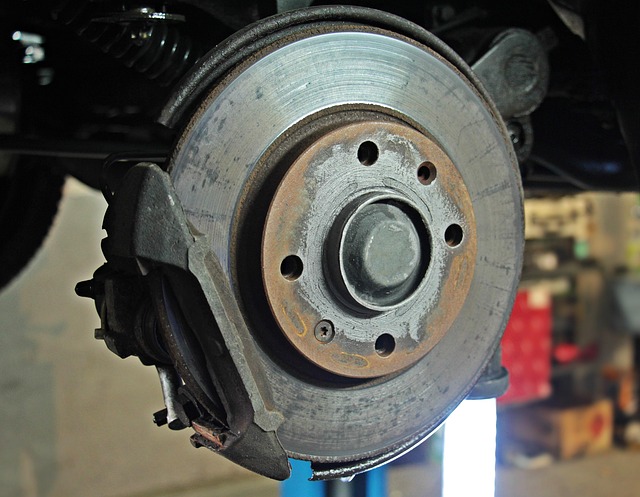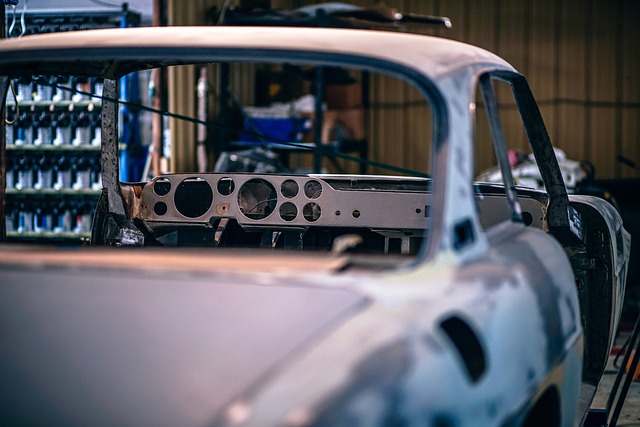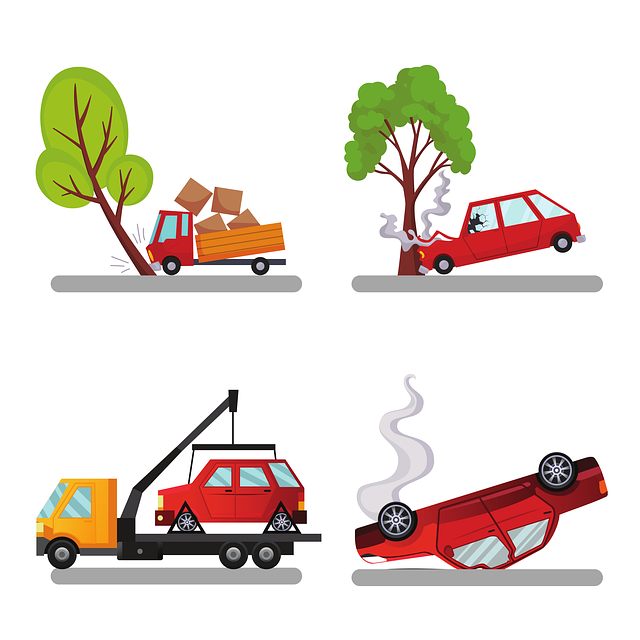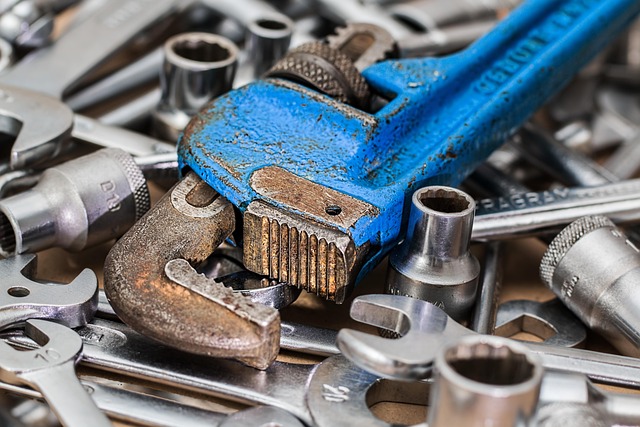Mastering Auto Body Repair Pricing: A Step-by-Step Guide
Understanding auto body repair costs is vital before any repair work. Pricing varies based on damage…….
In the ever-evolving automotive industry, auto body repair pricing plays a pivotal role in shaping consumer experiences and business strategies. This intricate aspect of vehicle maintenance involves setting competitive and profitable rates for services ranging from minor dents and scratches to extensive crash repairs. As consumers increasingly demand high-quality, efficient, and cost-effective solutions, understanding auto body repair pricing becomes essential for both businesses and individuals.
This article aims to provide an in-depth exploration of various facets of auto body repair pricing. We will navigate through historical perspectives, global trends, economic influences, technological advancements, policy frameworks, challenges, case studies, and future prospects. By the end, readers will have a comprehensive grasp of this critical component within the automotive sector.
Auto body repair pricing refers to the process of determining and setting charges for auto body restoration services, encompassing both structural and aesthetic repairs. It involves complex calculations that consider labor costs, material expenses, overhead, profit margins, and various other factors unique to each repair job.
Key components influencing pricing:
Labor Rates: Wages or rates charged by skilled technicians, paint specialists, and body shop employees vary based on their expertise, location, and market demand.
Material Costs: Prices of replacement parts, paints, primers, sealants, and other materials used in the repair process are subject to supplier agreements, market fluctuations, and product quality.
Overhead Expenses: These include rent, utilities, insurance, equipment maintenance, marketing costs, and administrative overhead, which are allocated based on square footage or labor hours.
Profit Margins: Body shops determine a desirable profit margin, typically expressed as a percentage of the total repair cost, to sustain operations and reinvest in business growth.
Auto body repair pricing has evolved significantly over the past few decades, mirroring technological advancements, changing consumer expectations, and economic shifts. Historically, pricing was largely based on time and materials, with mechanics charging by the hour for labor and the cost of parts. However, this approach often led to unpredictable outcomes and high bills for consumers.
In the 1980s and 1990s, the industry witnessed the introduction of standardized estimating systems that helped set more consistent and transparent prices. These systems used computer software to calculate repair costs based on specific vehicle models, damage types, and labor rates, empowering both shops and customers with a clearer understanding of pricing dynamics.
Today, auto body repair pricing is a critical factor in customer satisfaction, business competitiveness, and the overall health of the automotive aftermarket industry. It encourages innovation, fosters trust between consumers and businesses, and drives the continuous improvement of repair services.
Auto body repair pricing varies worldwide due to differing economic conditions, labor costs, local regulations, and consumer preferences. This diversity presents both opportunities and challenges for businesses operating in multiple markets.
North America: Known for its advanced auto industry, North American markets offer relatively higher wages and more stringent environmental regulations, impacting material and labor costs. Pricing strategies often reflect these factors, with a focus on high-quality repairs and customer satisfaction.
Europe: With a robust automotive manufacturing base, European countries exhibit varying pricing models due to differences in labor laws, tax structures, and consumer protection regulations. Germany, for instance, is known for its precision craftsmanship and competitive pricing, while France has stricter labor regulations affecting labor rates.
Asia Pacific: Rapidly growing economies like China and India present unique challenges and opportunities. Lower labor costs can lead to more affordable repairs but may also raise concerns about quality. Japan, with its rich automotive heritage, sets high standards for precision and craftsmanship, which are reflected in repair pricing.
Digital Transformation: The advent of digital technologies has revolutionized auto body repair pricing. Online estimating tools, digital invoicing, and cloud-based management systems enhance efficiency, accuracy, and transparency.
E-commerce and Marketplaces: Similar to the rise of e-commerce in retail, online platforms connect consumers directly with auto body shops, allowing customers to compare prices, read reviews, and book appointments.
Mobile Applications: Mobile apps offer on-demand repair services, instant estimates, and convenient booking options, further democratizing access to auto body repair pricing information.
The economic landscape plays a pivotal role in shaping auto body repair pricing strategies. Understanding market dynamics, investment patterns, and the interplay between supply and demand is crucial for businesses aiming to stay competitive and profitable.
Supply and Demand: The availability of skilled labor, quality parts, and specialized equipment influences pricing. Shortages or disruptions in these areas can lead to price increases.
Competition: In highly competitive markets, body shops may offer lower prices to attract customers, impacting overall industry margins. Conversely, unique services or specialized expertise can command premium rates.
Economic Cycles: During economic downturns, consumers may delay non-essential repairs, affecting business revenue. Conversely, stronger economies often lead to increased demand for vehicle maintenance and repair services.
Capital Expenditures (CapEx): Body shops invest in equipment, technology, and facility upgrades, which can significantly impact pricing strategies. Modern, efficient tools and software may command higher costs but enhance productivity and accuracy.
Operational Efficiency: Implementing lean manufacturing principles, process optimization, and digital solutions can reduce operational expenses, allowing for more competitive pricing or reinvestment in other areas of the business.
Value-Based Pricing: In mature markets with strong consumer protection laws, shops may focus on value-based pricing, emphasizing quality, warranty, and customer service to differentiate their offerings.
Cost-Plus Pricing: This strategy involves calculating the total cost of materials, labor, and overhead, then adding a markup to generate the final price. It is common in regions with fluctuating material costs or where reputation is paramount.
Market-Based Pricing: In competitive markets, body shops might set prices based on what similar services command in the local market, adjusting for their unique value proposition.
Technology has been a game-changer in auto body repair pricing, offering both opportunities to enhance efficiency and challenges related to adopting new systems.
Computer-Aided Design (CAD) Software: CAD systems enable precise measurements, 3D modeling, and virtual repairs, reducing estimation errors and streamlining the planning process. This technology is especially valuable for complex repairs or custom designs.
Robotic Welding and Painting: Automation in welding and painting processes improves accuracy, consistency, and productivity, leading to more efficient repairs and potentially lower labor costs.
Online Estimating Tools: Digital platforms allow customers to upload images of damage, receive real-time estimates, and compare prices from multiple shops. These tools enhance transparency and customer engagement.
Advanced Materials: The development of lightweight, high-strength alloys and composite materials offers cost savings in material expenses while improving vehicle performance and safety.
Technological advancements directly influence pricing strategies by reducing labor-intensive tasks, minimizing waste, and enhancing overall efficiency. As technology continues to evolve, body shops can expect further improvements in:
Digital Twin Technology: Creating digital replicas of vehicles for precise repair simulations, enabling more accurate and efficient repairs.
Artificial Intelligence (AI) and Machine Learning: AI algorithms can analyze vast amounts of data to predict material requirements, optimize work schedules, and improve quality control, ultimately impacting pricing dynamics.
Augmented Reality (AR) and Virtual Reality (VR): AR/VR technologies offer immersive training experiences for technicians, potentially reducing training costs and improving skill levels.
Government policies and regulations significantly impact auto body repair pricing, especially in terms of consumer protection, environmental standards, and labor laws.
Consumer Protection Laws: These ensure transparent pricing, fair business practices, and the right to repair for consumers. They may mandate disclosure of all charges, provide guidelines on estimated repair times, and protect against deceptive practices.
Environmental Regulations: Stricter emission standards and waste management policies drive the use of eco-friendly materials and processes, impacting material costs and pricing strategies.
Labor Laws: Minimum wage rates, overtime regulations, and worker classification laws directly affect labor costs and pricing structures. Shops must comply with these rules to avoid legal repercussions.
Policies and regulations create a level playing field for businesses while ensuring consumer rights and environmental sustainability. They may also encourage innovation by setting standards that drive the adoption of new technologies and processes, ultimately impacting pricing in the long term.
Despite its critical role, auto body repair pricing faces several challenges and criticisms that require thoughtful strategies to address.
Price Transparency: Customers often lack a clear understanding of pricing structures, leading to concerns about hidden fees or unexpected costs during the repair process.
Quality Variability: The industry struggles with maintaining consistent quality across different body shops, prompting consumers to question pricing discrepancies and service levels.
Skilled Labor Shortages: In many regions, there is a shortage of skilled technicians, which can drive up labor costs and impact pricing strategies, especially for specialized repairs.
Price Fixing Allegations: Critics argue that estimating systems and digital tools could facilitate potential price fixing among body shops. To counter this, industry associations should promote transparency, encourage competition, and implement fair trade practices.
Lack of Standardization: Variations in pricing models across regions create confusion for consumers. Developing standardized pricing guidelines while allowing for local flexibility can address this issue.
Addressing Consumer Concerns: Empowering customers with knowledge about repair processes, providing detailed estimates, and offering transparent warranty policies can build trust and mitigate criticism related to pricing transparency.
Location: New York City, USA
Challenge: A bustling metropolis with high labor costs and a diverse consumer base, New York presents unique challenges for auto body repair pricing.
Solution: An established body shop chain adopted digital transformation strategies, including implementing an online booking platform, offering real-time estimates through a mobile app, and utilizing advanced CAD software for precise repairs.
Results: The shop experienced a 20% increase in customer bookings within the first year due to enhanced convenience and transparency. Improved efficiency led to a 15% reduction in labor costs, allowing them to offer competitive pricing without compromising quality.
Region: Germany and France
Initiative: A collaborative effort between body shops, environmental organizations, and government agencies aimed at promoting eco-friendly auto body repair practices.
Actions: Shops were encouraged to adopt recycled materials, implement energy-efficient processes, and offer incentives for customers bringing in their own reusable parts.
Impact: This initiative led to a 30% reduction in material waste across participating shops within two years. Customer satisfaction scores increased due to the environmental focus, and several shops reported a 10-15% rise in repeat business.
Country: Japan
Program: A national initiative to establish a skilled workforce through comprehensive training and certification programs for auto body repair technicians.
Outcomes: The program resulted in a 25% reduction in defects and an increase in customer satisfaction ratings. Certified technicians demonstrated superior skill levels, enabling shops to command premium prices for high-quality repairs.
As the auto body repair industry looks ahead, several emerging trends and strategic considerations will shape pricing strategies.
Sustainable Repair Practices: With growing environmental consciousness, there is a rising demand for eco-friendly repairs. Shops focusing on recycled materials, energy-efficient processes, and sustainable business models can attract environmentally conscious consumers.
Telematics and Connected Cars: The integration of technology in vehicles offers new opportunities for predictive maintenance and remote diagnostics. Body shops can partner with automotive manufacturers to offer value-added services, potentially impacting pricing structures.
Personalized Repair Services: Customization and personalization are gaining traction across industries. Auto body repair shops can cater to unique customer preferences, offering tailored services at premium prices.
Subscription-Based Models: Similar to the rise of subscription services in other industries, auto body repair shops may explore offering monthly or annual subscription plans for routine maintenance and repairs, providing stability and predictability in pricing.
Blockchain Technology: Blockchain has the potential to revolutionize supply chain management, ensuring transparency in material sourcing, tracking, and pricing. It can also enable secure digital transactions between customers and body shops.
Augmented Reality (AR) Showrooms: AR technology can enhance customer experiences by allowing them to virtually inspect and approve repairs before finalizing the transaction. This could streamline the estimating process and improve customer satisfaction.
Diversify Service Offerings: Body shops should consider expanding their service portfolios, offering additional value-added services like paintless dent repair, window tinting, or interior cleaning to attract a broader customer base.
Embrace Digital Disruption: Adopting digital technologies, from online estimating to AR showrooms, can enhance operational efficiency, improve customer engagement, and enable data-driven pricing strategies.
Build Strong Brands: Establishing reputable brands with a focus on quality, service, and environmental stewardship will enable shops to command higher prices and attract loyal customers.
Auto body repair pricing is an intricate and dynamic aspect of the automotive industry, influenced by economic factors, technological advancements, and global trends. As consumers demand more efficient, transparent, and sustainable solutions, businesses must navigate a complex landscape to set competitive prices while maintaining profitability.
The future of auto body repair pricing promises exciting possibilities with emerging technologies, changing consumer preferences, and a growing emphasis on sustainability. By embracing digital transformation, adopting eco-friendly practices, and offering personalized services, body shops can thrive in this evolving market.
Q: How do I know if the auto body repair pricing is fair?
A: Fair pricing depends on various factors, including your location, the extent of damage, and the shop’s reputation. Compare estimates from multiple shops, ask for detailed breakdowns, and ensure they provide a warranty or insurance claim support.
Q: Can technology really make repairs faster and cheaper?
A: Absolutely! Technological advancements like CAD software, robotic welding, and digital estimating tools streamline processes, reduce waste, and minimize labor errors, often leading to faster and more cost-effective repairs.
Q: How can I find a reputable body shop with transparent pricing?
A: Start by asking for recommendations from friends or local car dealerships. Check online reviews, ensure they have valid licenses and insurance, and ask for detailed estimates before engaging their services. Reputable shops will be transparent about pricing and provide clear information on their processes.
Q: Are there any laws protecting consumers from unfair repair prices?
A: Yes, many countries have consumer protection laws in place to safeguard against price gouging and unfair business practices. These laws ensure transparency, fair pricing, and the right to repair for consumers. Familiarize yourself with local regulations to make informed decisions.

Understanding auto body repair costs is vital before any repair work. Pricing varies based on damage…….

Auto body repair pricing varies based on damage extent, material type (OEM parts cost more), labor r…….

Understanding auto body repair pricing involves recognizing that costs vary greatly based on damage…….

Understanding auto body repair pricing requires considering damage extent, vehicle type, location, a…….

In auto body repair, auto body repair pricing includes environmental fees covering proper disposal a…….

Hybrid Electric Vehicles (HEVs) present distinct challenges for auto body repairs due to their advan…….